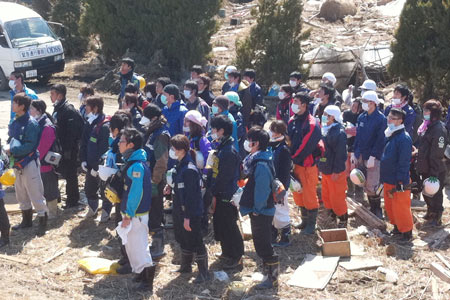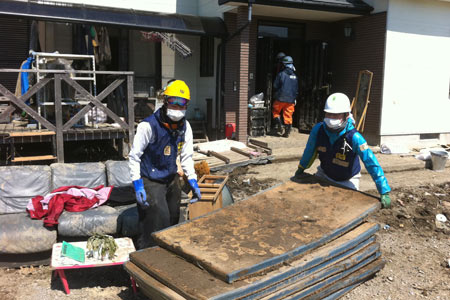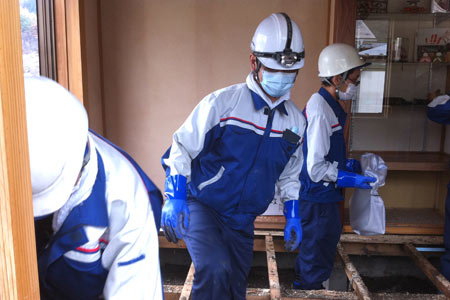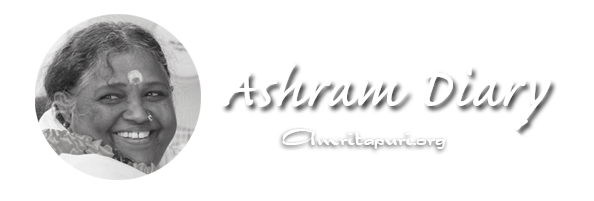On the fourth of April, we had returned to Ishinomaki. There were 51 volunteers this time—28 IVUSA (International Volunteer Student Association) members and 20 students from Kokushikan University Sports Medicine Department. After we arrived, we set up a large tent to use as our head office and one for cooking. Next to them, we set up about nine more tents to sleep in. If we really pack ourselves in—like sardines in a can—we we able to fit five or six of us in a tent. But there was no room to even roll over!

The first thing we did was to remove dirt from houses in an area called Kawakita. Before we started working, the mayor of Kawakita spoke to all of us. He told us that 140 of the village’s 160 elementary-school students were still missing. When the earthquake struck, they had all been lead out of the school into the schoolyard, only to be washed away when the ocean rolled in. He warned us that there was a chance we might come across some dead bodies as we worked. This was hard for the volunteers to hear, and I could tell they had to fight to keep themselves together emotionally.
The volunteers divided into five groups of nine members each. Each group had a group leader. Each group focused on certain houses, sweeping out all the dirt and bringing out all the chairs, tables, futons, TVs, laundry machines, dressers, etc. Looking at the walls of the houses, you could see the high-water mark—almost six feet up.

At the house at which I was to help, a young mother and her teenage daughter were quietly carrying out all their heavy furniture. Dirt streaked the mother’s cheek next to the dust-mask she wore. I joined them and helped them carry out all the tatami mats, which were extremely heavy, as they were soaked with water. We then took out the rest of the furniture as well. We found a tricycle and fashioned it into a cart and used it to haul garbage out to the roadside. Then, we swept all the dirt out of their garage.
At first, the facial expressions of the mother and daughter were a bit stiff, but since the students kept speaking to them in lively voices, they gradually started to relax and show smiles. I could feel their hearts—which had been somewhat hardened due to the swift blow of the tsunami—slowly soften in response to the students’ dedication, vigor and humor.
Some students became quite close with the families they helped. Many of the families invited the volunteers to return the next year to go fishing with them. The work, however, was very intense. Under normal circumstances, no one would enjoy such burdensome work—carrying heavy material all day, sweeping stinky dirt. Regardless due to the students’ determination to complete the work and thereby help people so immersed in sorrow, everyone was able to maintain their energetic spirit and enthusiasm.

After two days doing such work, the volunteer organizers asked us to move to another village, but the students wanted to continue in Kawakita, as they had established a special bond with the people there. They even began chanting “Let’s finish it all! Let’s finish it all! Let’s finish it all!” At that moment, the volunteers were glowing so beautifully—to me, to the people in the area, and to everyone. They were burning their wonderful being into our eyes.
Feel other’s sorrow as my own sorrow. One for all, all for one. Put yourself aside and think about others and act for them. If you do so, you can feel much deeper joy and happiness than you attain from filling your own desires.
– Viveka


Leave a Reply
You must be logged in to post a comment.